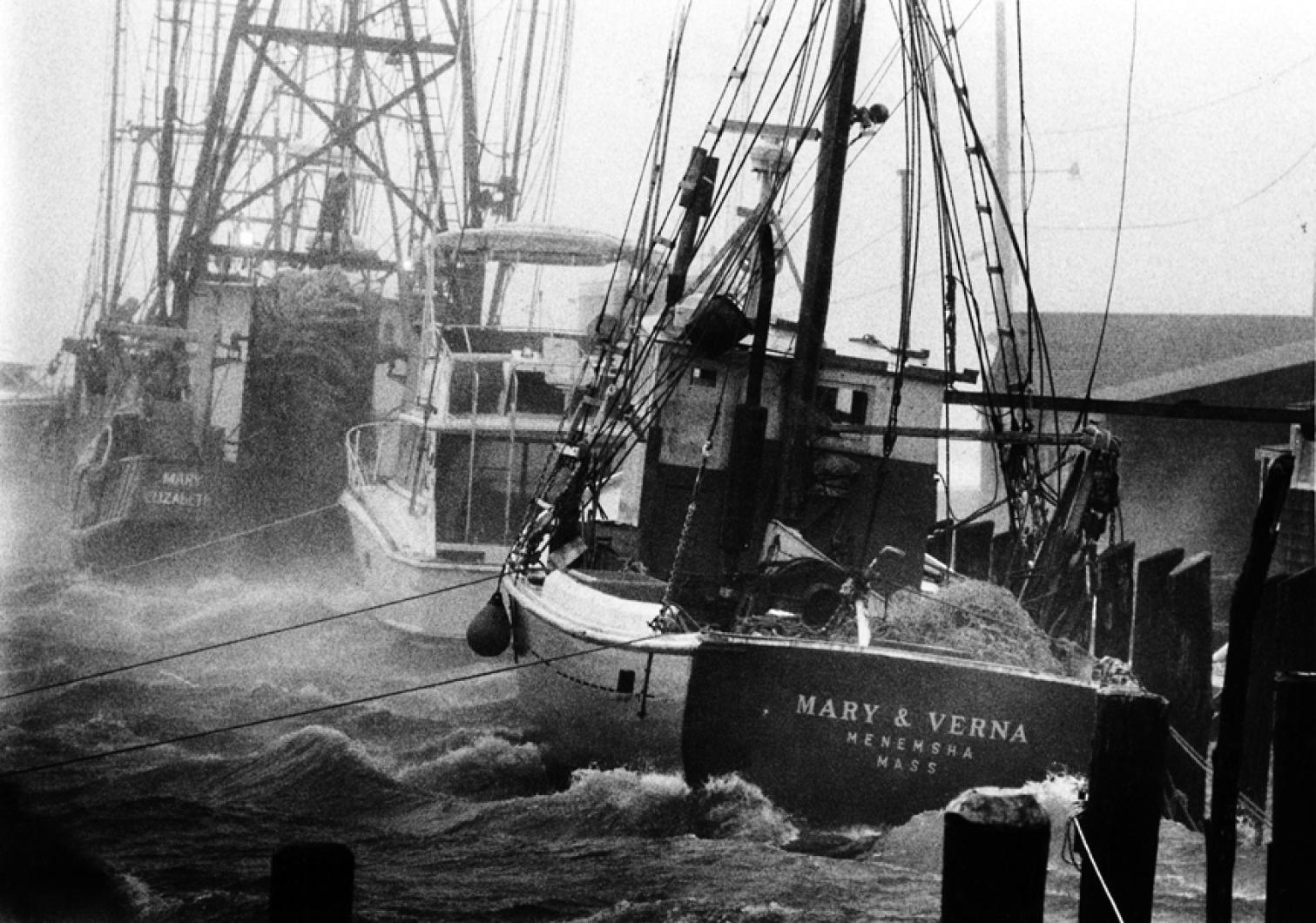The angry red swath on the NOAA map shows Earl’s path northward. As I write this, on Wednesday, it’s not clear what he intends — but already I can sense something in the air. The calm, sticky weather we’ve been having for the last few days is heavy with portent. Signs lurk in the quiet all around. Where are the songbirds? Even geese flying overhead seem to be hurrying to shelter. My imagination is pictured with memories of other hurricanes.
“Come in Walter, come in now!”
My grandmother is calling her husband who is gathering things off the glassed-in porch of their waterfront home in Harthaven. It is 1960 and Donna is calling. Outside, gusts tear at tree branches and the porch is wobbling. Reluctantly, Grandfather obeys. We close the doors to the porch, run the dining room table against it, and sit on it to hold it down. And wait. A few minutes later the entire porch blows away.
In 1944, I was two years old. This was before hurricanes were given human names so this one was called The Great Atlantic Hurricane. Many from our community gathered in our house deep in the woods. People tell me I was too young to recall such an event, but I remember it clearly. Someone gave me a flashlight for amusement and I walked around shining it in the faces of my aunts and uncles. What I saw there I will never forget. Fear.
Carol and Edna visited in 1954, on August 31 and Sept. 10 respectively. During Carol, a peak gust of 120 miles an hour was reported from the Vineyard. The two storms took 80 lives and caused $500 million in damage in the United States.
A year later it was Connie and Diane. Connie went ashore on August 12 in North Carolina but brought torrential rains to the Island and Diane moved over us on August 19.
In 1960, Donna — the hurricane that blew away our porch — arrived on Sept. 13, bringing sustained winds of 95 miles an hour and gusts to 130. Gloria visited in 1980 and Bob followed in 1991.
Hurricanes were once a common feature of our summers on Martha’s Vineyard. Memories of shambled piers, landlocked boats and blown-off roofs goaded us on as we prepared for them. This was before boats were built for trailers and the Island had too few marine railways to haul out hundreds of craft, so we battened down as best we could. Ropes were doubled. Anchors were set in deep mud and lines run to hold the boats off piers. Dinghies were hauled ashore and turned upside down behind buildings. Everything that could blow away was stored safely. And we waited.
For too many years we have been lucky. Now, Earl’s big red eye is gathering strength to the south of us, gleaning energy from the warm air and the ocean’s moisture, spewing it aloft, and sucking the wind into its center. Everything now depends on nature’s whim. Scientists tell us about the invisible topography of atmospheric mountains and valleys — and they can predict Earl’s path with some accuracy. But they can never tell us why that landscape exists — why a hurricane visits or passes safely to sea. All that is for Mother Nature to decide. And perhaps that’s the lesson for us tiny, complacent and occasionally arrogant human beings cowering in our homes with the windows closed tight — hoping for the best.
Gazette correspondent Sam Low is a writer and photographer who lives in Oak Bluffs.





Comments
Comment policy »